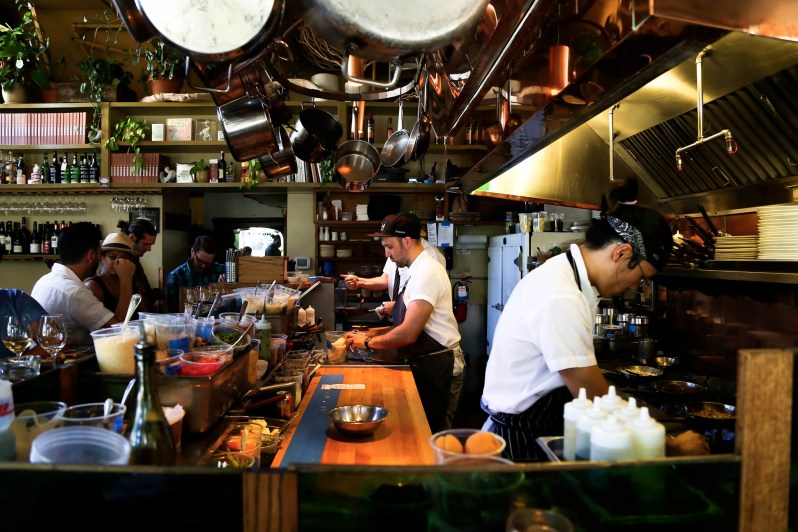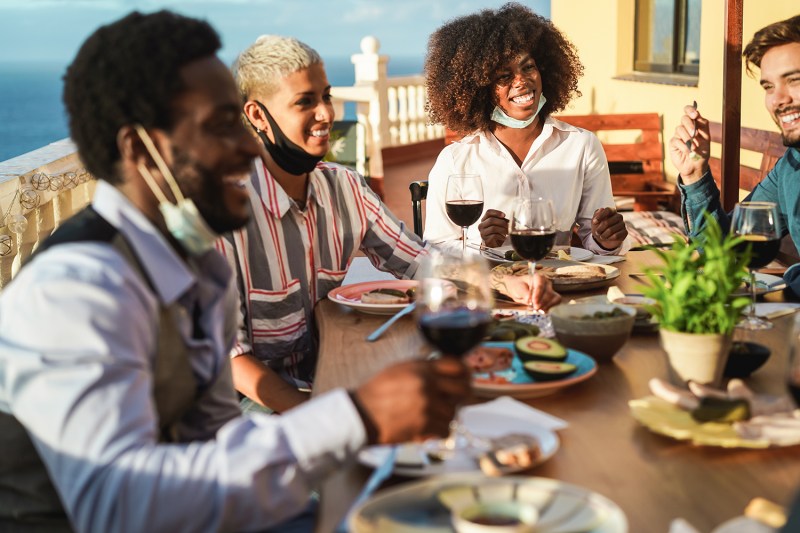
It’s hard to think of an industry more adversely affected by the pandemic than restaurant land. From Los Angeles to Charleston and every city in between, we continue to mourn the rising number of darkened storefronts and papered-over windows of our cherished local eateries. An estimated 120,000 have closed permanently in this country since the pandemic broke in March of 2020.
For those that have survived, adaptation has been vital. Whether it be a more streamlined takeout program, outdoor dining options, pods set up for small groups, or contactless transactions, such moves have salvaged the chances of many still-operating establishments. Now, as more people become vaccinated and cities lift restrictions, the open signs are illuminating at a lot of restaurants, in some form or another.
Related Guides
- Most Creative Restaurant Re-Openings During COVID-19
- How To Stay Safe Dining Out During A Pandemic
- Should You Travel After Getting a COVID-19 Vaccine?
Certainly, some of the adaptations are here for good. Some things, like a family buffet, just don’t seem plausible anymore. Many restaurants have experimented over the last year and come across concepts and ideas that will likely carry well into the post-pandemic dining era. We chatted with a few experts on what patronizing a restaurant might look like in the not-too-distant future, when the pandemic is finally behind us.

A Slower Pace
For James Beard-winning chef Gabriel Rucker of Le Pigeon and Canard in Portland, Oregon, it’s all about a change of pace. “My biggest takeaway from the last year and what I’ve personally learned — and something I hope we can all maintain — is to slow way down,” he says. “In the grand scheme of things, it’s okay to go at a slower pace. You can still maintain, be successful, but it’s okay to take a breath.”
Marching to a slower drum may actually align with restaurants in a post-pandemic world, or at least one that’s stepping out again into public dining areas again for the first time in more than a year. Expect to see smaller groups and more improved reservations staggering at a lot of places, at least for a while. That could allow for less stress in the kitchen, traditionally an environment many chefs liken to a pressure cooker. It could also lead to a more personalized dining experience, something some will pine for after a year-plus of ordering on our phones.
More Inclusive
For chef Kasey Mills of Portland’s Mediterranean Exploration Company and Shalom Y’all, the future looks more diverse. He says the last year has been tremendously educational and the restaurant group he launched over that stretch has learned something daily. “Even though we have faced down a multitude of challenges, I’m hoping that we are building the fundamentals of a healthier restaurant industry overall, one built on inclusion and support. That’s what we’re working to do in all facets of our business from the kitchen to the front of house,” he says.
It’s a statement that’s especially important in the restaurant industry, which tends to thrive in gentrifying areas and is not as diverse as many would hope. More, it’s an industry plagued by long hours and not exactly the healthiest of lifestyles. It’s an optimal time to hit the reset button and reform the system in a way that’s more inviting to all as well as easier on industry members’ physical and mental wellbeing.
Outdoor Dining

Many cities have embraced the European way, closing certain streets and alleyways to automobiles and setting them aside for outdoor dining. An increasing number of Americans have grown accustomed to this refreshing style of grubbing (National Restaurant Association research from last year found that full-service restaurants were fetching almost half of their business from al fresco dining) and it will be virtually impossible to take away.
It’s an easy route if your establishment is in Phoenix but what of Seattle restaurants? Many businesses in cold-weather states have put federal loans to work, investing in tents, overhangs, heaters, and fire pits that will see them through to the summer, and then come in handy again when the weather turns (and, not all of us are ready to eat inside a crowded joint yet).
Improved Technology
The apps and software used for contactless ordering and transactions has proved effective and will likely only improve. Even in the post-pandemic future, we may opt for this style just for efficiency’s sake, or to go paperless. Expect more and refined digital sales options for online menus.
Having a web presence will continue to be important. During the pandemic, restaurants have gone online to sell wines from their cellars or meal kits from their kitchens. Some have even transitioned into specialty markets, selling house-made sauces or some of the raw ingredients they would normally be cooking with during a normal dinner hour.
“Instead of a restaurant just doing one thing — dining — the business is going to come from more and different revenue streams,” Mills says. “Restaurants will need to have a strong and robust online community in addition to the traditional groups of guests and regulars.”
Part of the improved tech will involve modernizing old concepts. We’ve already seen things like vending machines step back into the spotlight. Expect to see more incarnations of outfits like Automat Kitchen, which launched mid-pandemic. It’s a contemporary take on an automated restaurant idea that goes back to Germany in 1895. Meals are made fresh, packaged in to-go format, and collected via a cash-free and contact-free format.
New Pop-Up Models
Even when it’s fully safe to venture into a restaurant again, the psychological toll of the pandemic may give some of us pause. Innovative new pop-ups are happening as we speak and expect to see many more in the future. Rucker is in the midst of one right now, a residency at Portland’s Jupiter Hotel. Essentially, he and his wine director, Andy Fortgang, are cooking up grub and pouring wines as a form of room service for guests. It’s a clever way to experience one of the best restaurants on the west coast from the privacy and safety of your own hotel room.
More Counter Service and Related Hybrids

Chris Leimena is an industry veteran who studied at the Culinary Institute of America in New York. Since, he’s worked at esteemed restaurants all over the county, including Per Se, Higgins, and currently, Canard. “It seems like the wave of the future is counter service,” Leimena says. He adds that it doesn’t make sense for every restaurant to have a highly skilled service staff, financially and otherwise.
“Often I feel like that can actually have negative effects on the experience, especially when you add in the disease-fueled anxiety that we have all been dealing with,” he says. “Most people are fully capable of bussing their own table or getting back in line to order another beer. The server-waiter model can be reserved for restaurants that necessitate it.”
Leimena has been impressed by certain establishments and how they’ve polished the fast-casual model. We’ll almost surely see more of this approach going forward, one that safely blends counter service and table service. He thinks places like Oma’s Takeaway are excelling at this new system. It beings with food ordered outside behind plexiglass, a credit card is swiped, and gratuity is added automatically. Diners are seated at spaced tables, each with a side table where the food is placed (beneath which there’s a bussing tub). A restaurant staff member may still be around, but hovering from a distance to attend to drink orders and the like.
Leimena says he can see approaches like this becoming more popular indefinitely. It’s close to the traditional system, while not putting anyone’s health at risk. “Anxious guests don’t have to worry about putting a mask on each time staff comes to the table,” he says.
Editors' Recommendations
- Cognac vs Whiskey: The main differences between them
- How to make the finest Tom Collins cocktail, according to experts
- A new study says restaurants have gotten more disgusting since the pandemic because of food safety
- The fantastic fall wine trends to know before the season sets in, according to the experts
- The ultimate guide to Argentinian barbecue, according to an expert


